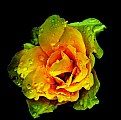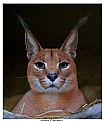This might sound very boring and not of a much interest to so many people here but in real life this is a key factor to a Perfect produced Photograph.
What to Measure?
You can measure either the Light Falling on Your Subject (Incident Light) the Light Reflected from It.
Incident Light Readings are really the best. You can measure the light by pointing your meter toward your camera position from the subject position. For this you must have a meter fitted with a diffusing dome or cone. Set such a reading on your camera, and you can expect to get the most accurate representation of your subject's tone. The only consideration is to make quite sure that you are measuring the light as it will be when you release the shutter. If you measure the sunlight falling on your subject, you won't get any details in your shadows.
Conversely if your meter was shaded, any sunlit parts of the picture will be over=exposed.
If you can not get to your subject, you can make a substitute reading from the camera position if the lighting is identical.
Just point the meter away from the subject.
Reflected light readings are more often used.
You point your meter at the subject and measure the light reflected from it. That's easy, but there is no one point to think about: the meter doesn't know what your subject is. Reflected light meters are calibrated on the assumption that they are to measure from an average scene.
If you took a correctly exposed picture of such scene with your lens so out-of-focus that the light was jumbled evenly across the film, you would get an even polish grey all over (in color or black-and-white).
The reflected light meter reading always give you a result that mixes up (integrates) to the same tone- whether you're measuring from a whitewashed wall, or a dirty coal cellar.
So, if you want your pictures to represent the tones of your subjects, you must measure from an average scenes.
The most commonly encountered difficult scene is when your main subject is black-lit, or standing against a very light background. If the subject is only small, a general reading leads to itís sever under exposure. Fine if you want a silhouette, useless if you are trying for a portrait.
There are three possible solutions to such problem: measure the incident light, take a reading just from your subject, or take a substitute reading. To take a reading just from your subject, go up close enough so that nothing else affects your meter. (If it measures through your lens that's easy, otherwise, you will have to make a few tests too see just what it does cover) Alternatively you can use a spot meter. (I will explain this Spot meter Functions on the next article.
Substitute readings are made from suitably toned objects. The ideal one is an 18 per cent gray card made especially for the job. Most con-venient, though, use the palm of your hand. If your palms are particularly dark, you may have to modify your reading a little, but its easy to rest that.hoose an ordinary scene with reasonably evenly distributed light and dark tones, light more or less behind you, and take a meter reading. Then take one from your hand with the light the same. If the reading is about the same, you can set the exposure reading from your hand when every you need a substitute. If they are different, just remember that you'll always need half a stop (or what ever the difference is) more or less than your hand reading.
|
















